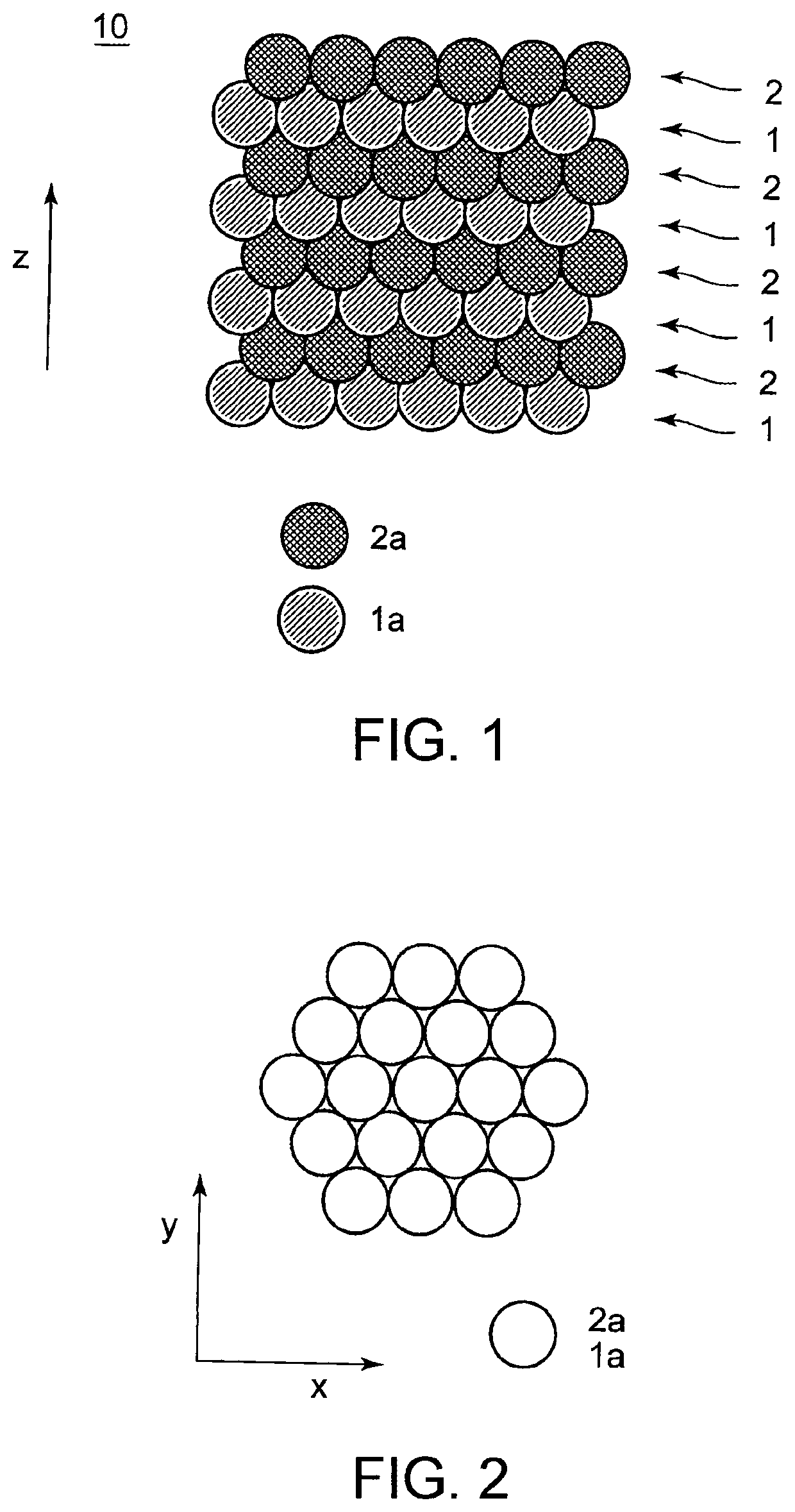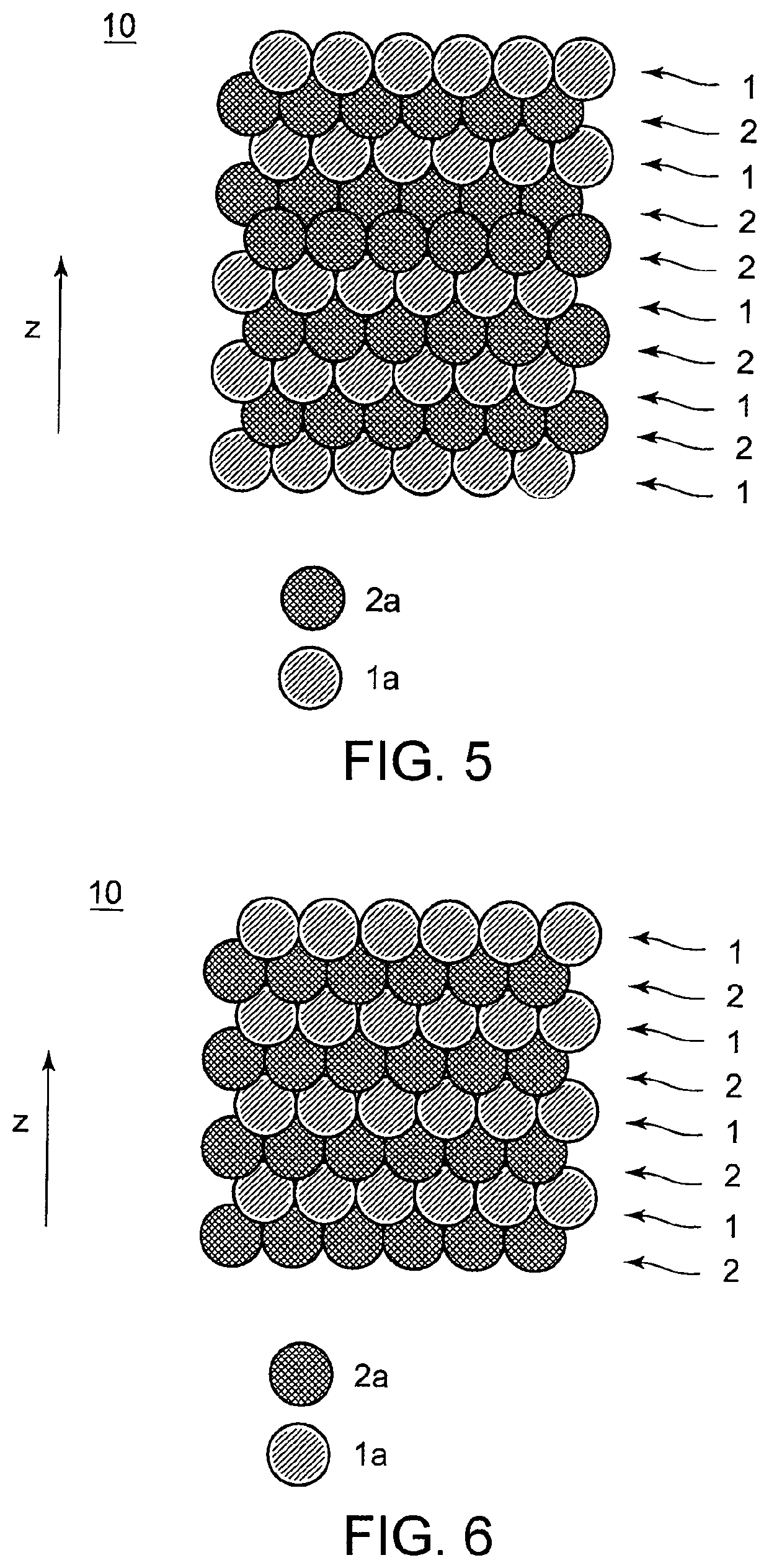Magnetic material and method of manufacturing the same
a technology of magnetic materials and materials, applied in the field of magnetic materials, can solve the problems of affecting the implementation of magnetic devices, affecting the reactivity of hard magnetic materials using noble metals such as pt, pd or au, and the upper limit of heat resistance of other devices mounted with magnetic devices and substrates, so as to reduce the cost of raw materials, high magnetic anisotropy, and high reactivity
- Summary
- Abstract
- Description
- Claims
- Application Information
AI Technical Summary
Benefits of technology
Problems solved by technology
Method used
Image
Examples
example
[0040]Next, an example of the present invention will be described with reference to measurement results. FIG. 3A shows magnetization curves of a layered film (magnetic material) in which Co and Ni were stacked while a ratio of the film thickness of Co and Ni was 1:2 as disclosed in Non-Patent Literature 1. FIG. 3B shows magnetization curves of a layered film (magnetic material) according to an example of the present invention in which Co and Ni were alternately stacked such that each layer was formed by substantially one atomic layer. FIGS. 3A and 3B show magnetization curves in a direction perpendicular to the substrate (out-of-plane) and in a direction on a plane of the substrate (in-plane) within the magnetic material. Specific film configurations were Si substrate / Ta (3 nm) / Pt (2.4 nm) / [Co (0.3 nm) / Ni (0.6 nm)]4 / Co (0.3) / Pt (1.5 nm) / Ta (3 nm), and Si substrate / Ta (3 nm) / Pt (2.4 nm) / [Co (0.2 nm) / Ni (0.2 nm)]4 / Co (02) / Pt (1.5 nm) / Ta (3 nm). Those magnetic materials were produced b...
PUM
| Property | Measurement | Unit |
|---|---|---|
| thickness | aaaaa | aaaaa |
| thickness | aaaaa | aaaaa |
| thickness | aaaaa | aaaaa |
Abstract
Description
Claims
Application Information
 Login to View More
Login to View More - R&D
- Intellectual Property
- Life Sciences
- Materials
- Tech Scout
- Unparalleled Data Quality
- Higher Quality Content
- 60% Fewer Hallucinations
Browse by: Latest US Patents, China's latest patents, Technical Efficacy Thesaurus, Application Domain, Technology Topic, Popular Technical Reports.
© 2025 PatSnap. All rights reserved.Legal|Privacy policy|Modern Slavery Act Transparency Statement|Sitemap|About US| Contact US: help@patsnap.com



